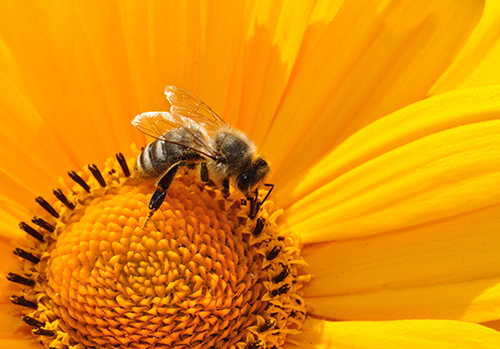
Photo by Pixabay on Pexels.
The Buzz About Bees
I do not fear many things, but I do fear bees. Getting a bee sting has not happened to me yet, and I hope to keep it that way as long as possible. My first instinct is to swat at anything that even resembles a bee. However, after reading about the danger of bee extinction, I might take a different approach when dealing with these insects.
Why are bees important?
Pollination occurs when insects travel from plant to plant and fertilize them. And bees just so happen to be one of the most important pollinators for food crops. Bees have tiny hairs that cover their body and attract pollen. After a bee lands on a flower, pollen sticks to the bee and travels with it to its next destination. Once that bee lands on the next plant or flower, the pollen falls on the new plant resulting in cross-pollination. This process produces fruits, vegetables, and seeds.
Check out the top five reasons why bees are so important:
- Assist in producing 1/3 of our food supply
- Helps provide ½ of the world’s fibers, oils, and other raw materials
- Helps to create various medicines
- Creates food for wildlife
- Prevents soil erosion
Are the bees in danger?
With all that bees provide, you would think they would be the most protected species on the planet. Unfortunately, the bee population has been dwindling for a while to various dangers that they encounter.
While it’s impossible to pinpoint one lone cause for the decrease in the bee population, there are three major threats that stand out.
Pesticides. On non-organic farms, pesticides are added to crops to control pests. However, they also harm bees by blocking the neural pathways in their central nervous systems, which causes disorientation that leads to the inability to feed.
Varroa Mite. Honeybees are facing a large threat from the varroa mite. The varroa mite attaches itself to the honeybee and sucks on its blood. When the bee returns to the hive, the varroa mite spreads and brings viruses and diseases with them.
Loss of Habitat. Another significant threat against bees is the development of land. As cities begin to grow and agriculture adopts more intensive practices, bees lose the wild spaces, hedgerows, and meadows where they can find flowers and food.
How Can You Help?
The Museum of the Earth has provided a few quick tips that you can implement to help save the bees!
- Build a pollinator garden with wildflowers.
- Enhance nesting spots with bamboo stalks, drilled wood blocks, or nesting straws.
- Be cautious when and where using pesticides.
Have Health Insurance Questions?
We hope that this information on bees is helpful to you.
Insurance is oftentimes overwhelming and we want to shed light on the industry by answering your questions. Comment below and your question may be the topic of our next post!
If you liked this article, share it with your friends!
Empower Brokerage wants to help you find the insurance coverage you need and help you save money getting it. Stay on top of your health and give us a call at (844) 410-1320.
Get affordable health insurance quotes by clicking here.
See our other websites:

